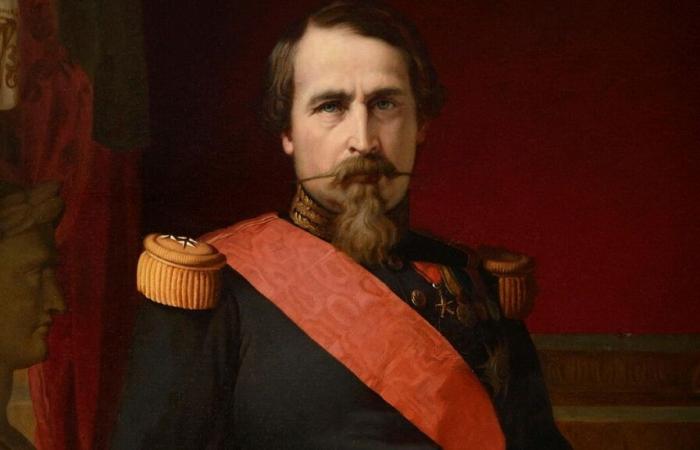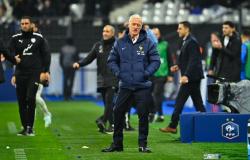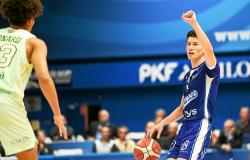The question arose in the middle of the writing phase. How can you captivate the viewer with a documentary on a subject like Napoleon III, which is a little dry at first glance? How can we escape the classic pattern of a slightly dusty film, which alternates between decryptions of historians sitting on a chair and images of engravings, monuments, paintings to illustrate their point?
Édouard Jacques had an idea: use artificial intelligence (AI). With his producer Emmanuel Priou from “Bonne Pioche”, he explains everything about this four-part project called “Napoleon III, the price of audacity”, which should see the light of day in the last quarter of 2025, on Canal +.
Napoleon III “the visionary”
Why was the director interested in this emperor? “Because he is poorly known and poorly learned in France, we tend to see him as a bad Napoleon I, a loser par excellence, even though he has done lots of things, he is truly apart, it was a visionary,” insists Édouard Jacques.
Why use AI?
“In documentaries, we are often very basic in terms of illustrations. In form, we are quickly limited, notes Emmanuel Priou… To compensate for this lack, some use cartoons or digital animation. “But it costs a fortune,” observes the producer.
“We had already planned to alternate narrative scenes nourished by archives with fictional sequences,” explains Édouard Jacques. I said to myself why not rework these archives by animating them with AI? As the project was already ambitious, we wanted to push the cursor a little further. »
This form could help bring back younger viewers who are more accustomed to images to this type of film. “Young people don’t watch classic historical documentaries,” insists Emmanuel Priou. This is perhaps a way to broaden the audience for more difficult documentary subjects. »
“The idea is to make history fun while being hyper precise on the historical aspect, also pleads the director. Everything was completely reread by the historian Éric Anceau, a specialist in the period, to the exact word. “There are lots of films that we didn’t make or made very poorly because no one had access to this type of images,” notes the producer. This opens up a much wider field of possibilities. »
How does the team work?
First we had to find the archives to bring to life. The National Library of France and other funds are overflowing with documents from this era. A very long research work then begins.
“Concretely,” summarizes Édouard Jacques, “it’s as if I were passing a shopping list to the librarian. » Thanks to a breakdown of each narrative sequence, the latter knows what is needed. He is looking for engravings, paintings, drawings, photos that correspond: the interior of Napoleon’s office, a fortress where he was imprisoned which has now disappeared, the Tuileries castle, a court room, settings for universal exhibitions…
“We bring our characters to life in places that no longer exist,” enthuses the director. It’s not an invented office, it’s the real office! » « Édouard filmed the real uniforms of the time at the Invalides to create a database. The AI was told: those are the costumes! And when we shape the soldier, then it’s the right costume,” says Emmanuel Priou.
All that remained was to find someone who mastered these artificial intelligence technologies. “We called on a sort of mad scientist who lives alone in his chalet and conceptualized the thing,” notes the author of the film. On screen, the result is stunning, according to the first images that we have been able to view. The real sets come to life. Napoleon III regains his features and speaks to us.
Pitfalls to avoid
AI is still imperfect, sometimes uncontrollable. And can sometimes distort a building, add a finger to a hand, plant an anachronistic detail in a setting. A team combs through each sequence and “erases” the erroneous elements. “Like in Photoshop,” slips the director. It can quickly become a machete quest in the jungle! » A very time-consuming but essential step.
The teams also want AI to remain a tool. Not an end in itself. “We are here to get as close as possible to historical veracity, where the slippery slope would be to illustrate by leaving the machine freewheeling,” notes Emmanuel Priou. You also have to know when to stop, because the desire to refine can be infinite with a permanent desire to go further.”
And he remains clear on the intention. “We must continue to tell stories, that’s our job,” defends the co-founder of Bonne Pioche. The narrator’s work is the same regardless of the tool. Some people fear that technology will take precedence over everything else, but that only depends on us. The real work is writing. AI remains the wrapping around the object. »
The field of possibilities
With this technique, whose budget is that of a classic documentary, assures the producer, the field of possibilities opens up. “It often happens that we say to ourselves: I’m not going to be able to talk about this because I have no way of putting it into pictures. When I wrote, at no time did I restrain myself, assures the director. We went looking for archives that no one has seen for years, even centuries. The documentary becomes a time travel machine; it must be viewed as a series on a specialized subject. » “It is a tool which has its qualities, its faults, but it would go against the meaning of the story to deprive oneself of it,” believes the producer.
And the fiction in all this?
In the fictional scenes, we follow a team of reporters from a fictional newspaper of the period, commenting on current events and the events they witness. Ten days of filming were required in studios in Bry-sur-Marne (Val-de-Marne). “These scenes, which last twenty minutes in each of the four episodes for thirty minutes of AI, replace the intervention of historians,” underlines Édouard Jacques. They are there to decipher, to read between the lines. “Get out of the narrative of history to bring about political and historical reflection.”
“Napoleon III, the price of audacity”, a Bonne Pioche Télévision and Storia Productions production. Broadcast at the end of 2025 on Planète+/Canal+ docs/France 3 Corse.






